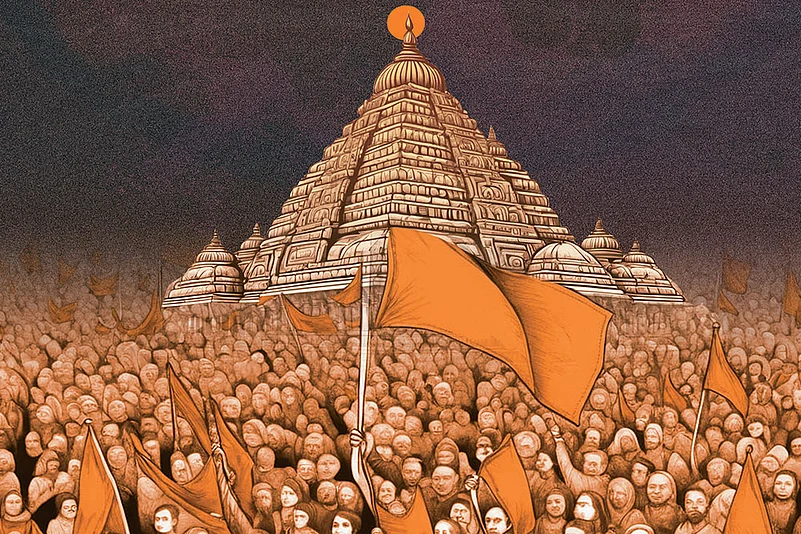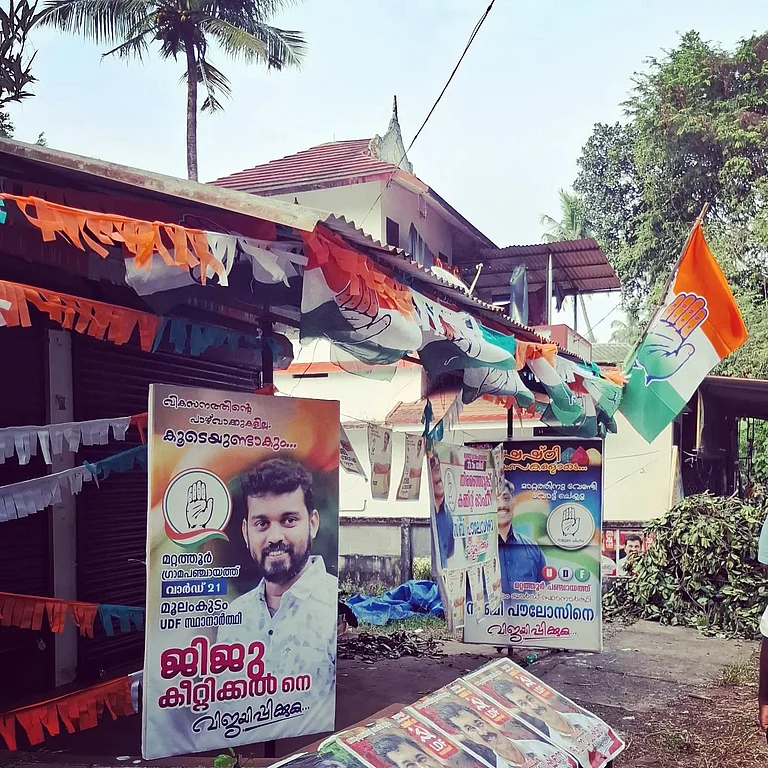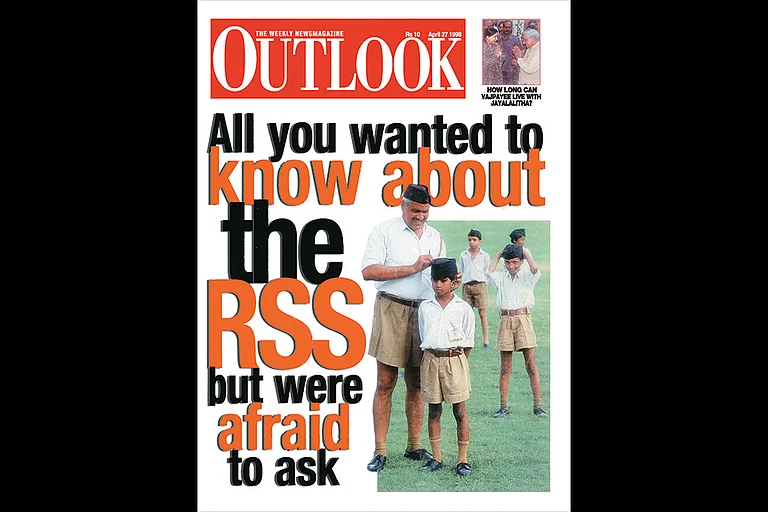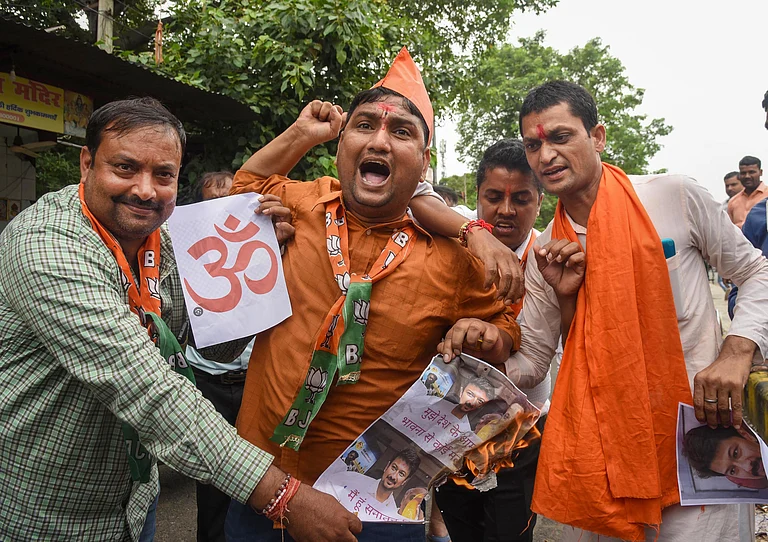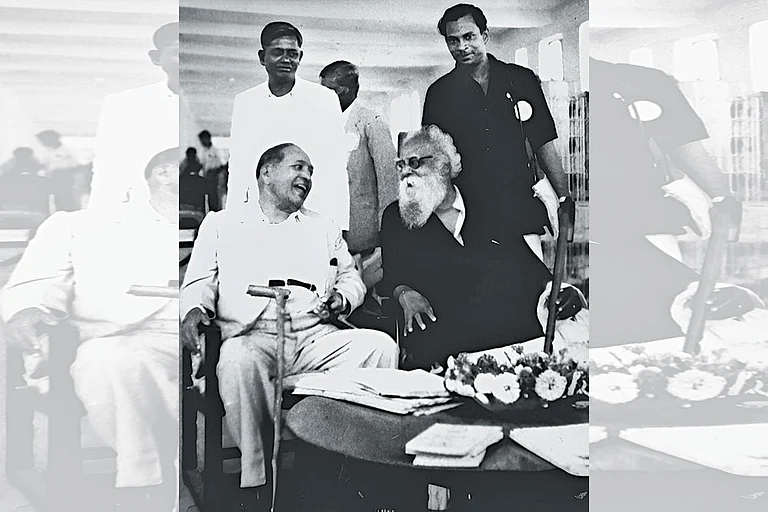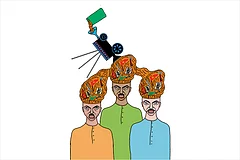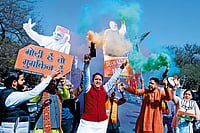Ideology is not about the world out there but how we desire to view it. It is a way of organising the chaos of our desires. While, most philosophers of the 20th century liken ideology to consciousness, philosophers of the 21st century see in it the workings of the sub-conscious. Ideologies allow us to represent the world in a way that allows us to relate to it and make it more inhabitable. While there has been some talk of the world entering a post-ideological phase, political philosopher Slavoj Zizek argues, rather counter-intuitively, that this “end of ideology” signifies that ideology has “come into its own” as it is now so entrenched that it is invisible. Ideologies are powerful when they no longer work as explicit ideologies but begin to become the “collective sub-conscious” or simply the commonsense of our times.
Further, ideology has conventionally been associated with the political domain. Ideologies are political, belonging to dominant political parties and political mobilisations. Ideologies were associated with governments and the State. Ideologies were imposed top-down, and consumed bottom-up. Global thinking on this has changed to recognise that if ideologies are about representing the world and help us relate with a sense of belonging then it cannot be exclusively political but also necessarily about culture. Culture here refers to values, ideas, symbolism, ethics and emotions. Ideologies are collective expressions of individual experiences. Ideologies help us to connect disparate looking “inner environments” within us to collective being. Ideologies connect psychological drives to collective imperatives.
Ideology in current times therefore is essentially about the interface between the political and the cultural. While the essence of culture is understood in terms of solidarity, oneness, and belonging, political is about power and instrumental reasoning. Ideologies of our times manage the conflictual relation between solidarity and instrumentality. While culture contaminates the political, the political attempts to colonise culture. While culture sets the gaze on the political being too modernist and individuated, political rakes up the prejudices within culture that are historically constructed but made to look eternal and natural. While historicity carries the burden of alienation, eternity (sanatan) of culture carries the burden of hierarchy. The supra-conflict of our times is how do we arrest modernist alienation that is soulless, amoral, and without intensity of emotions, without that fight against alienation becoming a ruse, an illusion to justify and reinforce prejudice, exclusion and hierarchies? How do we construct ethico-political and politico-cultural ideologies to cohabit together—as individuals, as communities, as nations, and also globally and finally at a planetary level?
Hindutva in recent times has come close to signifying the “end of ideology” in ‘New India’. Hindutva is an ideological vision constituted by many layers and it looked as if there is nothing beyond the saffron horizon. The ‘success’ of Hindutva as an ideological force was in its ability in matching the “cultural turn” rather than project itself as an exclusive political one. It emerged as a formidable cultural force when all other political and social organisations in India converted themselves into exclusive political forces without a cultural location. While others sounded high modernist, Hindutva went national, and local. It made a claim to take the local into the global. Hindutva resonated with the times as an emerging politico-cultural and ethico-political ideology that is here to unify and forge new kinds of solidarity. It made the right noises about undoing hierarchies and prejudices, at least within the Hindus, without giving up on traditions and civilisational sensibilities. It made grand claims of “desh chalana hai, sarkar nahi” (we are here for the nation, not just to form a government). Hindutva ideology managed to convert caste into culture, religion into community and nation into a family. It generated powerful metaphors and allegories of national/Hindu resurgence.
The success of Hindutva ideology was in connecting to a civilisational sub-conscious. It brought a sense of continuity and a memory of pride and historical injury together. It made an aggressive claim to ostensibly shake off diffidence and inferiority in its attempts to decolonising narrative and backing traditional knowledge, yoga, Ayurveda, democracy in (Vaishali) ancient India, vernacular languages, traditional dressing, khadi, local cuisines and millets, handicrafts and tribal arts, among many such overtures. The Hindutva wave introduced a new lingo and provided a new politico-cultural frame that succeeded in connecting a majoritarian-political project to historical injury and an authoritarian state to memory. Hindutva was successful as much for its agenda as for being fresh, innovative, performative and banked on “speed and scale”. Ideology is as much about performance as it is about a perspective. Performance is not just theatrical but a necessary mode of communication in complex societies.
Hindutva ended up with a politics without philosophy. its cultural agenda was coming across as commonality without solidarity.
While the regime relentlessly pursued a majoritarian political project, people saw in it a deep sense of belonging; while the regime built an authoritarian state, people saw in it a resurgence of a civilisational memory. The call for a civilisational state was an attempt to culturalise authoritarianism. I prefer to refer to it as “ascetic authoritarianism”. Civilisational discourse, as Samuel Huntington suggested, did not weaken the nation-state but buttressed the claims to hyper-nationalism. It is in this mode that the regime drew a great and deep consent for “rebuilding” the temple at Ayodhya, and abrogated Article 370—by far the most popular decisions of the current regime. They followed this with “one nation one tax” with GST to be connected to “one nation, one election”. They have and will follow it up with the implementation of the Uniform Civil Code, and the implementation of CAA-NRC. It has taken us closer to the utopia of Ram rajya to be realised in the 21st century as Hindu rashtra. The Hindutva ideology looked flawless and with a photo-finish it could lay claim to its third term in office. Yet, in a strange and rather ironical way, Hindutva ideology looks more exhausted than exhaustive, more authoritarian than authoritative, more aggressive than authentic.
Will Hindutva ideology survive after 2024? Has it entered a period of crisis? What will be the outcome of a crisis? Some of these questions will be relevant in 2024, irrespective of the electoral outcome of the general elections. To understand the workings of an ideology we need to read the counter-trends as much as the dominant ones. We need to read not only between the lines but also against the grain. In this context, the dying out of euphoria around the building of the temple weeks after its grand inauguration (pran prathishta) is a case in point, and a continuity of the memory of the loss the Bharatiya Janata Party (BJP) suffered in Uttar Pradesh after the demolition of the Babri mosque in 1992. The temple was the wild card entry into the general elections of 2024, yet it proved to be a non-starter? Does it say that the BJP’s Hindutva agenda can only work an idea of solidarity against something as political thinker Hannah Arendt suggested, but not in favour of something? Does it mean people are not enamoured by its marketisation of spirituality, as much as its attempts of contemporising the Ramayan through uncivility as witnessed in the film Adipurush? Is it the political rejection of Hindutva we are witnessing that is struggling to hold the common man on the street and if so, what does it mean for its cultural agenda and its claims of a politico-cultural narrative?
The rise and possible ebbing of Hindutva has profound lessons on ideology and democracy. Politics today seems to be driven by the imagination of aspirations and social mobility at one end and larger solidarities and affinity at the other. Hindutva seems to have hit a dead-end at both ends of the spectrum. It was clear that its economic programme was not providing the promised mobility and its cultural agenda was coming across as commonality without solidarity, or unification without unity. Its growing reliance on control, surveillance and fear unsettled the sense of belonging it offered. Not just religious minorities but the majority was also self-censuring itself in expressing its opinions. There was a gradual process of ‘minoritisation of Hindus’ as there was ‘Kashmirisation’ of the ‘mainland’. The history of Hindutva was catching up as its essential philosophy and strategies by its ideologues such as Golwalkar and Savarkar were developed with a focus of targeting the religious minorities to bring about the unity of the majority. But that notional separation could never fructify in its operational logic.
People still held onto the Hindutva rhetoric as people weaponised Hindutva against the ruling elites and their policy frame that had invisibilised the citizen, and they responded to the top-down invisibilisation with bottom-up indifference. People’s indifference became a near-existential crisis of the opposition parties. Hindutva was the new ideology that became the conduit in the transformation of the Congress from its “Nehruvian consensus” to its “neoliberal consensus”. It connected all the dots of discontent and the cultural sensibilities that fell through the cracks. Eventually, Hindutva has faced the same wall of neoliberal consensus as the Congress. There cannot be clarion calls of “garv se kaho hum Hindu hai” with a faltering economy and reinforced prejudices. There cannot be larger-than-life ethical claims with the allegations of electoral bonds and buying up of opposition members. Hindutva ended up with a politics without philosophy and a strategy without politics.
Hindutva will have to reinvent itself. Counter publics have pulled the rug beneath the ideological feet of Hindutva. To stand back on its feet it will have to recalibrate the quotient between ethics/culture and politics. It may not do it, sensing that all other parties are in the same boat. It may do more of the same, and that will depend not on the BJP and the RSS but the opposition in India. If the opposition can push for a greater transformative agenda (as is visible with the caste census), Hindutva will become more civil in India and paradoxically get a fresh breath of life!
(Views expressed are personal)
MORE FROM THIS ISSUE
Ajay Gudavarthy is associate professor, Jawaharlal Nehru University, New Delhi






